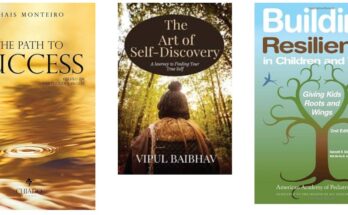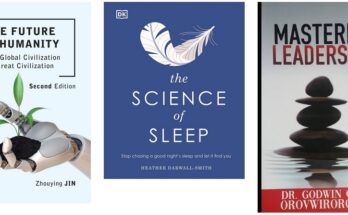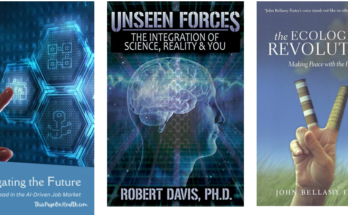


The Four Tendencies" by Gretchen Rubin vs The Body Keeps the Score" by Bessel van der Kolk vs The How of Happiness" by Sonja Lyubomirsky
| Aspect | “The Four Tendencies” by Gretchen Rubin | “The Body Keeps the Score” by Bessel van der Kolk | “The How of Happiness” by Sonja Lyubomirsky |
|---|---|---|---|
| Overview | Explores how understanding personal tendencies can improve happiness and productivity. | Examines the impact of trauma on the body and mind and offers insights into healing. | Provides evidence-based strategies for increasing personal happiness. |
| Main Concept | Identifies four personality types based on how individuals respond to expectations: Upholders, Questioners, Obligers, and Rebels. | Explores how trauma is stored in the body and mind, and discusses various therapeutic approaches to healing. | Focuses on actionable techniques and practices to boost happiness based on psychological research. |
| Purpose | To help readers understand their own and others’ tendencies for better interactions and goal-setting. | To provide a comprehensive understanding of trauma and its effects, and offer strategies for recovery. | To offer practical advice grounded in scientific research to improve overall happiness. |
| Target Audience | Individuals interested in personal development, productivity, and self-awareness. | Individuals dealing with trauma or mental health professionals looking for new insights. | Anyone looking to enhance their overall happiness and well-being through proven methods. |
| Approach | Uses a mix of theory and practical advice, with quizzes to identify one’s tendency type. | Combines scientific research, personal stories, and clinical practices to address trauma. | Blends scientific research with practical advice and exercises for increasing happiness. |
| Key Insights | Recognizing and understanding your tendency can help you align your actions with your goals. | Trauma affects the body and mind in profound ways, and healing requires addressing both. | Happiness can be increased through intentional practices, such as gratitude and mindfulness. |
| Strengths | Practical framework for self-understanding and personal development. | In-depth exploration of trauma with a focus on holistic recovery. | Evidence-based approach with practical, easy-to-apply happiness strategies. |
| Weaknesses | May oversimplify personality types and not account for individual nuances. | Can be dense and may require background knowledge to fully appreciate. | Some techniques might seem too general or not applicable to everyone. |
| Author’s Background | Gretchen Rubin is a well-known author and speaker on habits and happiness. | Bessel van der Kolk is a psychiatrist and researcher specializing in trauma. | Sonja Lyubomirsky is a professor of psychology with expertise in happiness research. |
| Impact and Reception | Widely appreciated for its practical insights and accessible writing. | Highly regarded for its comprehensive approach to trauma, though some may find it heavy. | Popular for its actionable advice and scientific backing, though results may vary. |
“The Four Tendencies” by Gretchen Rubin
- Main Concept: The book categorizes people into four types based on how they handle expectations: Upholders, Questioners, Obligers, and Rebels. Understanding these types can lead to better self-management and improved relationships.
- Purpose: To provide a framework for understanding how people respond to internal and external expectations, helping readers to tailor their approaches to personal and professional challenges.
- Approach: Combines theoretical insights with practical advice, using quizzes to help readers determine their type and offering strategies tailored to each tendency.
- Strengths: Practical and actionable, helps in personal development and improving interactions with others.
- Weaknesses: The framework may be too simplistic for some, as it might not capture the full complexity of individual personalities.
“The Body Keeps the Score” by Bessel van der Kolk
- Main Concept: The book discusses how trauma impacts the body and mind, and explores various therapeutic methods to address and heal from trauma.
- Purpose: To offer a detailed understanding of the effects of trauma and to provide guidance on healing through various approaches, including body-based therapies.
- Approach: Integrates scientific research with clinical experience and personal stories, providing a comprehensive view of trauma and recovery.
- Strengths: In-depth and insightful, with a focus on both the physiological and psychological aspects of trauma.
- Weaknesses: The content can be heavy and complex, requiring some background knowledge to fully grasp the concepts.
“The How of Happiness” by Sonja Lyubomirsky
- Main Concept: Offers practical strategies and scientific insights into how individuals can increase their happiness through intentional practices.
- Purpose: To provide actionable advice based on research to help people enhance their overall happiness and well-being.
- Approach: Combines scientific research with practical exercises and suggestions, making it accessible and applicable to a broad audience.
- Strengths: Evidence-based and practical, with a focus on actionable steps for improving happiness.
- Weaknesses: Some strategies may be perceived as too general or may not work for everyone.
This comparison highlights the distinct focus of each book—personality types and self-management in Rubin’s work, trauma and healing in van der Kolk’s, and happiness enhancement strategies in Lyubomirsky’s.



